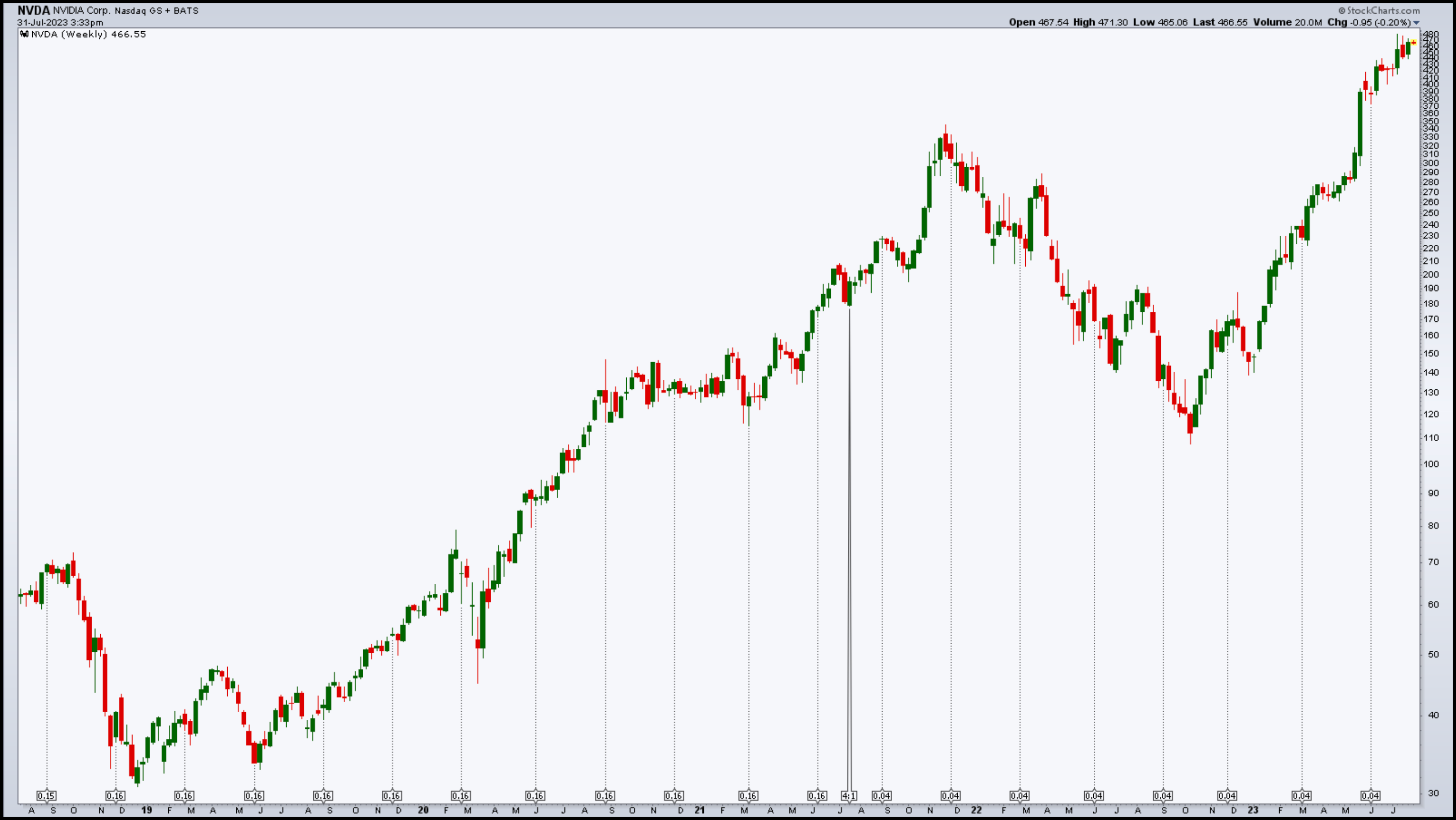Do you adjust your price data for stock splits, dividends, or distributions?
We do adjust our historical data to remove the “artificial” effects of splits, dividends, and distributions from our charts. If we didn’t do that, you would see big vertical gaps in a chart. These gaps would cause misleading technical signals to appear on your charts.
Here’s an example. Say a stock had a 2-for-1 split, and the price suddenly drops 50% on the chart. This would wreak havoc on an indicator such as the MACD, which would turn bearish because “momentum” suddenly dropped. But traders aren’t bearish on the stock because of a split. If anything, traders might be more bullish. To eliminate the big downward price gap, we divide all the price data from before the split by two and multiply all the corresponding volume data by two. This eliminates the gap and gives a true picture of people’s opinions of the stock.
It’s similar for non-market-related adjustments, including dividends and distributions. While not usually as flashy as splits, dividend and distribution adjustments could cause misleading signals if their effects aren’t factored out.
If you want to see the unadjusted data for a stock, add an underscore to the front of the ticker symbol, e.g., “_TSLA”
Want to see when splits or dividends occurred? If using SharpCharts, do the following:
- Enter a symbol in the “Create a Chart” box.
- From the Overlays dropdown menu, select “Events.”
- Click “Update.”
Below is an example.

The small boxes at the bottom of the price area that corresponds with the vertical lines are the event markers. They identify when splits/dividends/distributions happened and the type of split and dividend or distribution values. In July 2021 NVDA had a 4:1 stock split. The rest of the event markers display the dividends or distributions in dollars.